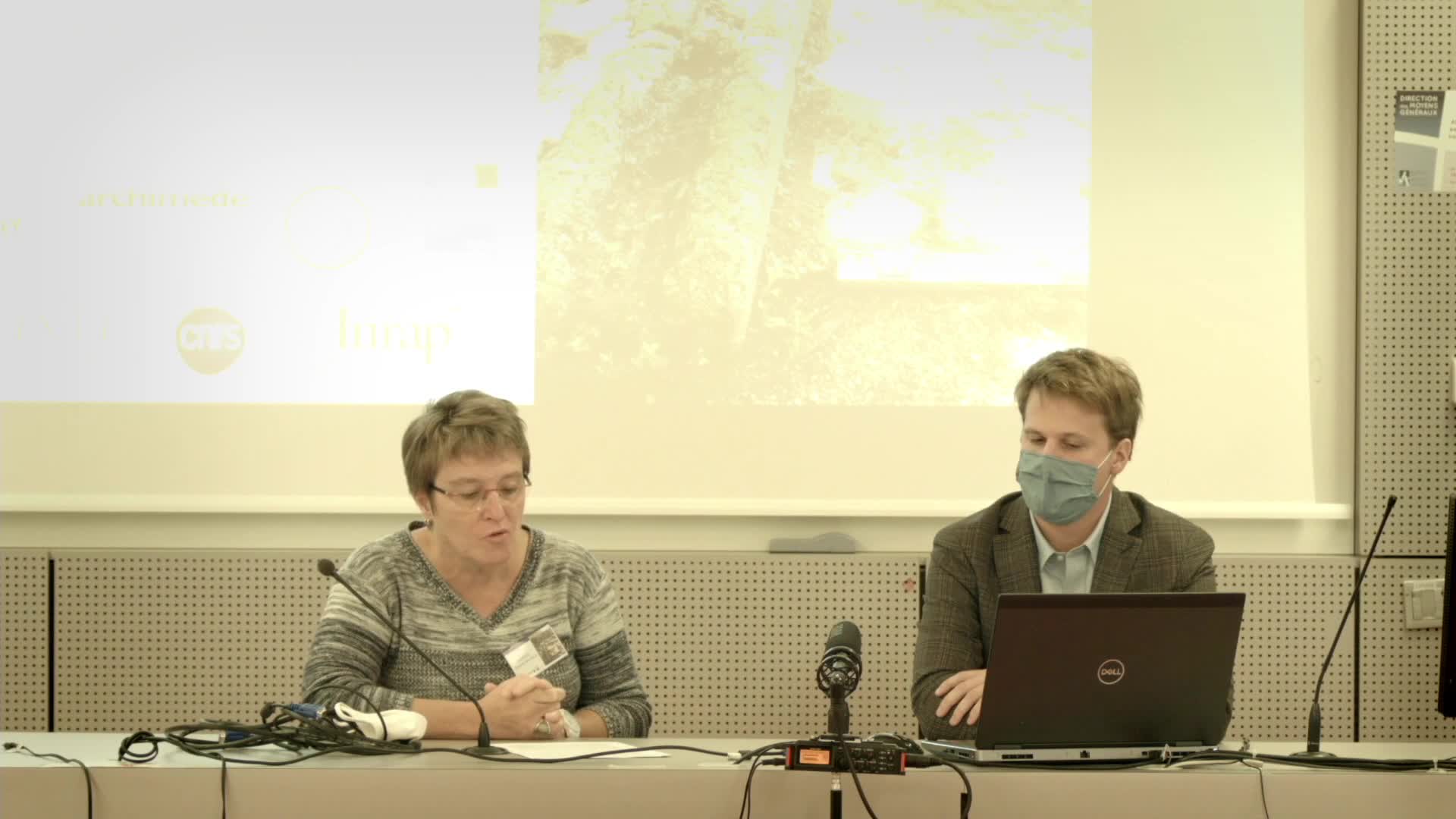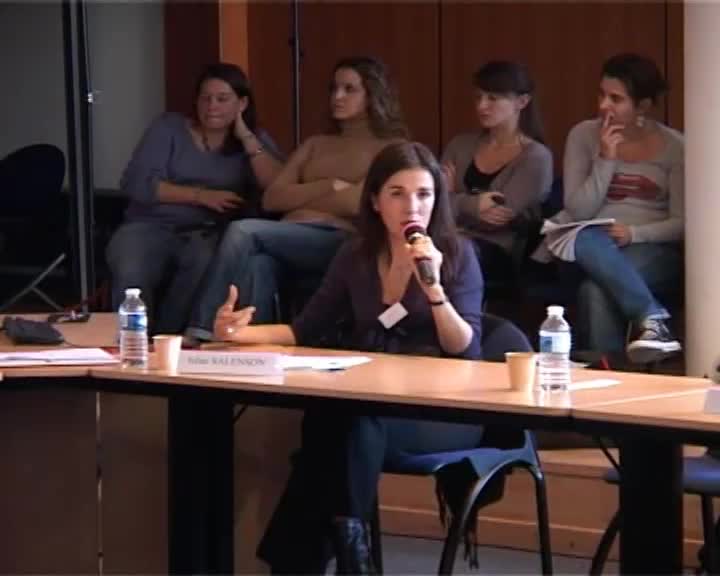Notice
Urban sanitation in Roman Mirobriga (Santiago do Cacèm, Portugal)
- document 1 document 2 document 3
- niveau 1 niveau 2 niveau 3
Descriptif
One of the greatestchallenges any urban settlement, whatever its size, faces is that of keepingcertain health standards. In Roman times, this concern is attested in citiesfounded all over the empire in the form of complex sewage systems designed withthe cities themselves.
However,if the systems within major cities founded and created ex nihil or largely rebuilt upon their annexation to the romanterritory are relatively well known, such is not the case of those found inmedium and small sized urban centres, many of them ancient indigenous Iron Agesettlements that offered several sorts of orographic and urbanisticconstraints.
Thispresentation is the outcome of the investigation conducted in the site known asMirobriga, in modern day Portugal.This Iron Age settlement, whose occupation dates back to, at least, the 9thor 8th century BC, was later fully converted into Roman City, in thecourse of the 1st century AD.
Although in Mirobriga the construction of the roman forum destroyed most of the originalsettlement, occupying almost the entire hill and forcing the settlement itselfto move to the surrounding grounds, the overall terrain did not favour thecreation of an orthogonal urban grid. This resulted in an organic design ofpaths, some probably adapting previously existent routes; insulae that embraced and adapted to the various hills comprised inthe urban perimeter; and several topographic constraints that lead to theplacement of some buildings in less-than-ideal locations.
The existence of somesort of sanitation mechanism in this ancient city had already been hintedpreviously due to the existence of two bath buildings, both with their ownlatrine. However, the further analysis of the several extant buildings revealedthat despite the inexistence of an underground sewage system, most of thebuildings had draining devices that flowed onto the various streets, denoting aclose coexistence of people and wastewater at a street level that undoubtedlyinfluenced the overall urban landscape.
Through theidentification of the different sorts of wastewater that flowed from eachbuilding, we were able not only to assess some degree of specialization, giventhe recurring association of certain building techniques/materials used toconstruct the pipelines/channels to specific types of waste; but also toobserve how the sloping terrain shaped the way wastewater flowed through thecity and even the way some buildings were designed, revealing the existence of some level of concern aboutthe way a heavy pour of both waste and rain water would take a toll on thestructural stability and overall salubrity within the buildings themselves.
Communicants :
Catarina FELÍCIO, Doctorante, Nova FCSH
Filipe SOUSA, Doctorant, Nova FCSH
Colloque organisé par :
Jean-Baptiste Lebret
Sandrine Agusta-Boularot
Réalisation :
Lambert Capron
Dans la même collection
-
Evacuation des eaux usées et pluviales dans les quartiers d’habitation et d’artisanat du Castellas …
Pendant 20 ans, l’agglomération antique du Castellas a fait l’objet d’un vaste programme d’étude et plusieurs zones de fouille y ont été ouvertes. Si la plus connue reste le forum, d’autres ont
-
évolution, répartition et gestion des réseaux d’évacuation des eaux usées dans le quartier urbain a…
Les fouilles de grande ampleur conduites sur la réserve archéologique de Saint-Romain-en-Gal au cours des quarante dernières années ont fourni des jalons chronologiques essentiels pour la connaissance
-
La gestion des eaux sales, troubles et indésirables à Aix-en-Provence, durant l’Antiquité
La compréhension des modalités de gestion des eaux dans et aux abords de la ville antique d’Aix-en-Provence reste à ce jour très inégale, qu’il s’agisse des eaux propres ou des eaux sales. Alors que l
-
Le parcours des eaux propres et usées au fil de l’évolution de l’îlot urbain de la maison des Dieux…
Les éléments des réseaux hydrauliques conservés au sein des parcelles de la maison des Dieux Océan et de la maison aux Cinq Mosaïques ont été présentés dans le cadre des monographies qui leurs ont été
-
La gestion des eaux à Forum Iulii : la cas du site de l’école des Poiriers
Forum-Iulii est un port maritime que les premières mentions et les plus anciennes traces archéologiques font remonter au milieu du Ier s. av J.-C. L’extension de la ville, à un rythme varié, est
-
Introduction générale
Introduction générale - colloque international : Eaux sales, eaux troubles, eaux de ruissellement : la gestion des eaux indésirable dans le monde romain Communicants : Jean-Baptiste LEBRET
-
L’ensemble monumental de Saint-Romain-en-Gal : l’exemple d’un bassin de rétention romain ?
Le quartier nord-ouest de Vienna, mis au jour sur le site archéologique de Saint-Romain-en-Gal, en rive droite du Rhône, est traversé d'est en ouest par un ruisseau. À partir du milieu du Ier siècle
-
La gestion des eaux usées à Avenches / Aventicum ? Quelques éléments de réponse (visioconférence)
Si l’approvisionnement en eau potable d’Avenches/Aventicum, capitale de la cité des Helvètes est d’une manière générale relativement bien connue (aqueducs et fontaines de rues, très nombreux puits),
-
Cassinomagus (Chassenon, Charente) : gestion des eaux indésirables dans le secteur sud-est de l’agg…
L’agglomération secondaire Cassinomagus s’est établie aux marges occidentales de la cité des Lémovices avant le début de notre ère. À partir du début du Ier siècle p.C., elle s’est développée dans
-
30 ans après Pontus Reimers : de la nécessité d’harmoniser les études sur les réseaux d’évacuation …
En 1991, paraissait dans les Actes d'un colloque tenu à Lund en 1988 (pour célébrer la réouverture de l’Institut suédois de Rome) un article de Pontus Reimers : Roman sewers en sewerage networks –
-
Colloque international : Eaux sales, eaux troubles, eaux de ruissellement : la gestion des eaux ind…
Mot de bienvenue Communicants : Réjane Roure (directrice du laboratoire ASM) Frédéric Servajean (directeur du LabEx ARCHIMEDE) Colloque organisé par : Jean-Baptiste Lebret Sandrine Agusta
-
Indésirables mais utiles : la gestion des eaux dans la périphérie urbaine d’Augustonemetum/Clermont…
Les trois sites considérés ici – rue Fontgiève, Scène nationale, rue Rabanesse – ont été étudiés dans le cadre de fouilles archéologiques préventives réalisées sur de vastes superficies entre 2012 et
Sur le même thème
-
Axe Catastrophes urbaines - Les inondations sous le prisme des SHS et des sciences de la modélisati…
PujolLéoGuevara ViquezSofiaDeux présentations : Assimilation de données variationnelle pour la modélisation de crues éclair urbaines : application à un quartier d’Abidjan Capturer l(es) inondation(s) dans la ville : le
-
Eau sans frontière ? Acteurs israéliens, palestiniens et internationaux de l’eau dans l’espace isra…
SalensonIrèneMOFIP : Mobilités frontières et conflits dans les espaces israélo-palestiniens (1) La première rencontre de l’équipe MOFIP et le Réseau d'Excellence Ramses² a eu lieu à la Maison
-
La pertinence des échelles territoriales dans les transitions énergétiques
Pour fêter les 100 ans de la Régie Municipale du Gaz et de l'Électricité, la Chaire RESET a convié chercheurs et spécialistes afin de dresser une histoire des énergies à Bordeaux.
-
L’ensemble monumental de Saint-Romain-en-Gal : l’exemple d’un bassin de rétention romain ?
Le quartier nord-ouest de Vienna, mis au jour sur le site archéologique de Saint-Romain-en-Gal, en rive droite du Rhône, est traversé d'est en ouest par un ruisseau. À partir du milieu du Ier siècle
-
Evacuation des eaux usées et pluviales dans les quartiers d’habitation et d’artisanat du Castellas …
Pendant 20 ans, l’agglomération antique du Castellas a fait l’objet d’un vaste programme d’étude et plusieurs zones de fouille y ont été ouvertes. Si la plus connue reste le forum, d’autres ont
-
Introduction générale
Introduction générale - colloque international : Eaux sales, eaux troubles, eaux de ruissellement : la gestion des eaux indésirable dans le monde romain Communicants : Jean-Baptiste LEBRET
-
La gestion des eaux sales, troubles et indésirables à Aix-en-Provence, durant l’Antiquité
La compréhension des modalités de gestion des eaux dans et aux abords de la ville antique d’Aix-en-Provence reste à ce jour très inégale, qu’il s’agisse des eaux propres ou des eaux sales. Alors que l
-
La gestion des eaux à Forum Iulii : la cas du site de l’école des Poiriers
Forum-Iulii est un port maritime que les premières mentions et les plus anciennes traces archéologiques font remonter au milieu du Ier s. av J.-C. L’extension de la ville, à un rythme varié, est
-
Le parcours des eaux propres et usées au fil de l’évolution de l’îlot urbain de la maison des Dieux…
Les éléments des réseaux hydrauliques conservés au sein des parcelles de la maison des Dieux Océan et de la maison aux Cinq Mosaïques ont été présentés dans le cadre des monographies qui leurs ont été
-
évolution, répartition et gestion des réseaux d’évacuation des eaux usées dans le quartier urbain a…
Les fouilles de grande ampleur conduites sur la réserve archéologique de Saint-Romain-en-Gal au cours des quarante dernières années ont fourni des jalons chronologiques essentiels pour la connaissance
-
Colloque international : Eaux sales, eaux troubles, eaux de ruissellement : la gestion des eaux ind…
Mot de bienvenue Communicants : Réjane Roure (directrice du laboratoire ASM) Frédéric Servajean (directeur du LabEx ARCHIMEDE) Colloque organisé par : Jean-Baptiste Lebret Sandrine Agusta
-
La gestion des eaux usées à Avenches / Aventicum ? Quelques éléments de réponse (visioconférence)
Si l’approvisionnement en eau potable d’Avenches/Aventicum, capitale de la cité des Helvètes est d’une manière générale relativement bien connue (aqueducs et fontaines de rues, très nombreux puits),















